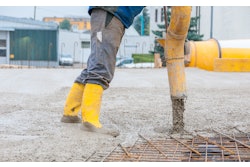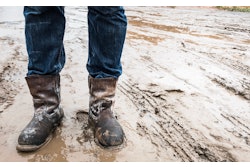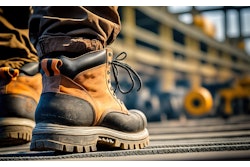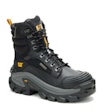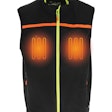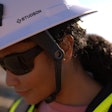
Can a worker wear rain boots on a construction site? Boots incorporating suitable materials and features may make it possible to do so. Comfort and safety are the two main driving factors when wearing rain boots on a construction site while conducting work during wet or rainy weather.
Rain or rubber boots are designed with waterproof technology that keeps feet dry. By their very design, rain or rubber boots are slip resistant and slip resistance is a key factor in avoiding accidents on a construction worksite.
Many companies offer rubber boots designed with steel toes or safety toes integrated in them to provide optimal protection for the feet.
Rain Boots and Safety Compliance
As noted in this previously published IRONPROS story, the National Institute for Occupational Safety and Health (NIOSH) notes that slips, trips, and falls (STFs) are the third most common type of non-fatal work-related injuries in the United States. Injuries from STFs often lead to time off the job for workers.
The U.S. Department of Labor Bureau of Labor Statistics (BLS) report on National Census of Fatal Occupational Injuries indicated work-related fatalities due to falls, slips and trips increased 5.6 percent in 2021, from 805 fatalities in 2020 to 850 in 2021. Falls, slips and trips in construction and extraction occupations accounted for 370 of these fatalities in 2021, an increase of 7.2 percent from 2020 when there were 345 fatalities, the BLS notes.
Rain boots feature an outsole design crafted with a specific tread, groove or lug pattern that maximizes surface contact and channels water, mud, and other substances away from the sole. Traction can be further enhanced through a process called siping – akin to what one would see on a tire tread – which involves cutting thin grooves into the outsole to create additional edges that provide more grip on the ground.
Additives or coatings that are applied to the outsole of rain boots can help enhance their grip on oily and wet surfaces.
The material with which rain boots are manufactured may include specialized rubber compounds such as silica that enhance traction.
Keeping Feet Dry with Rain Boots
Wearing rain or rubber boots protects the feet and lower legs from muddy and wet conditions that are common on worksites when working during rain or near water. Exposure to those elements can lead to a number of health issues as previously reported in this IRONPROS story.
Wet feet can lead to fungal infections, sores, blisters, athlete’s foot and trench foot, the latter of which may take months to heal and may never regain some sensations if the damage is extreme. Keeping one’s feet dry and protected also goes a long way in preventing accidents.
When the new American Society for Testing and Materials (ASTM) F3445 standard for slip resistance was introduced in July 2021, it was the first time such a standard was introduced in the United States for slip resistance footwear. Slip resistance is defined as the relative force that resists the tendency of the shoe or foot to slide along the walkway surface.
Ultimately, wearing slip-resistant footwear helps contractors maintain their footing and balance when working on challenging surfaces where stability, traction and safety are essential and may entail slick or wet surfaces.
Rubber or rain boots also can be effective in providing a barrier against exposure to oils, chemicals and other substances that could be present on a construction site.
Addressing Hazards on the Jobsite
Some worksites may have electrical equipment onsite that can present electrical hazards. Some rubber boots can provide protection against electrical hazards. Rubber boots also may provide protection from falling objects and debris.
As always, safety is paramount in choosing any type of construction work apparel. The boots a worker chooses to wear should provide sufficient support and be appropriate for the jobsite’s particular hazards. Safety managers should ensure that footwear worn by construction workers does indeed meet the ASTM standards for which the job indicates. When in doubt, podiatrists can help contractors choose the proper footwear for the job.
Easy maintenance is another benefit of wearing rubber or rain boots. Because of the materials from which they are manufactured, these boots are typically easy to clean and maintain. To retain the benefits rain boots can bring to a worksite, routinely inspect them for holes.

